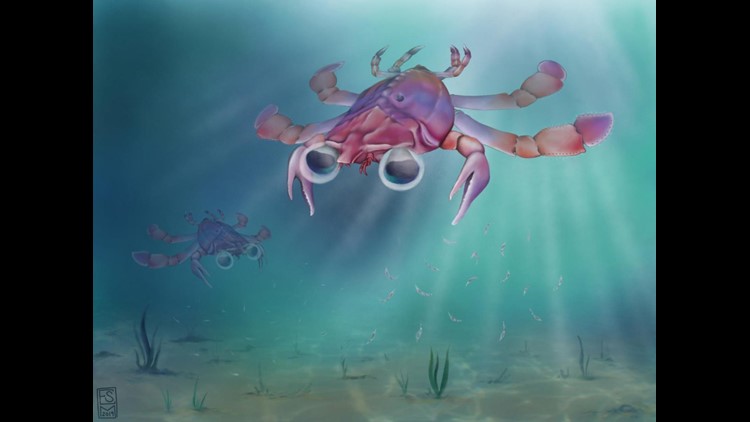A new species of crab that scientists say is the “strangest crab that has ever lived” has been discovered in Colombia and the United States.
The prehistoric crab dates back to 95 million years ago and scientists say it defies all the normal crab features. The new species, named Callichimaera perplexa, has bent claws, big eyes with no sockets, an exposed tail and leg-like mouthparts.
“We started looking at these fossils and we found they had what looked like the eyes of a larva, the mouth of a shrimp, claws of a frog crab, and the carapace of a lobster,” said Javier Luque, postdoctoral paleontologist at the University of Alberta and Yale University, in a statement from the University of Alberta. “We have an idea of what a typical crab looks like — and these new fossils break all those rules.”
Because of the mismatch of body parts it was only fitting that the new species was named after a chimera: a mythological creature that has a lion’s head, goat’s body and a snake’s tail. The full name of the new crab, Callichimaera perplexa, translates to “perplexing beautiful chimera.” With the unusual legs, Luque said he believes the creature lived in the water, swimming more than crawling around on land.
“Callichimaera perplexa is so unique and strange that it can be considered the platypus of the crab world,” said Luque in a press release from Yale. “Usually we think of crabs as big animals with broad carapaces, strong claws, small eyes in long eyestalks, and a small tail tucked under the body. Well, Callichimaera defies all of these ‘crabby’ features and forces a rethink of our definition of what makes a crab a crab.”
Luque led an international team of researchers that first found the fossilized crabs, no bigger than a quarter, in 2005 in the Andes Mountain of Colombia. Over the next few years, researchers found more than 70 specimens of the prehistoric crab, including babies and adults. Some were discovered in Wyoming.
A study on the team’s findings was published on Wednesday in the journal Science Advances.
“This discovery, from the mid-Cretaceous, illustrates that there are still surprising discoveries of more recent, weird organisms waiting to be found, especially in the tropics. It makes you wonder ‘what else is out there for us to discover?'”



